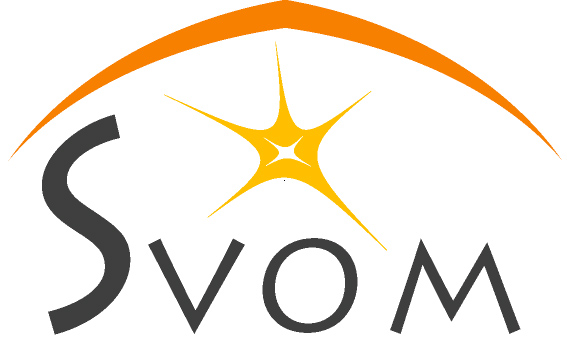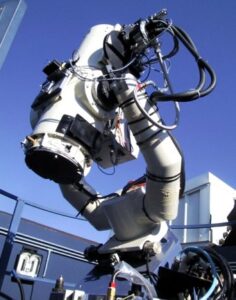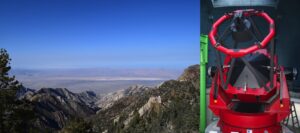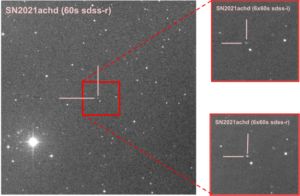GFT (Ground Follow-up Telescope) robotic telescopes are essential for observing and studying gamma-ray bursts. Particularly responsive, they point to the localization area communicated by the satellite through the VHF alert network, in less than a minute. These tracking telescopes will provide an accurate measure (of the order of the arc second) of the celestial coordinates of the burst, as well as the photometric evolution of the emission in several spectral bands (from the visible range to the infrared). They will also provide an estimate of its distance (by the redshift measure).
The results are then sent to the French Science Center (FSC), which will relay the alert message to larger telescopes, such as the New Technology Telescope (NTT) and the Very Large Telescope (VLT) for visible light optics. or ALMA observatory for radio waves.
The SVOM mission will implement two robotic telescopes with a primary mirror at least 1m in diameter. One will be based in San Pedro Martir in Mexico under French responsibility, the other at the Jiling Observatory under Chinese responsibility.
F-GFT Ground tracking telescope (France)
The French ground follow-up telescope, F-GFT, is a new telescope that precisely meets the mission’s requirements, namely a system with very good sensitivity (1.3 meters in diameter), remarkable responsiveness (on the target in less than 20 seconds), a wide field of view (26 arcminutes), and a panchromatic vision (three simultaneous cameras: two in visible light and one in infrared). To ensure its effectiveness, it must also be capable of observing automatically, without any human intervention.
The F-GFT is thus capable of detecting a burst less than 5 minutes after receiving an alert from SVOM, up to a magnitude of 22.0 in R_AB and 20.5 in J_AB. With these observations, it can provide a photometric redshift with better than 10% precision in a redshift range between 3.5 and 7.5, while identifying the closest (z<3.5) and farthest (>7.5).
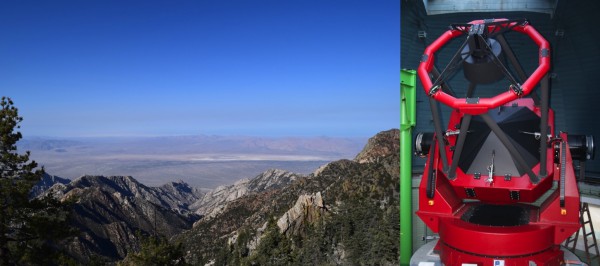
The F-GFT is the result of close collaboration between France and Mexico. Its observation site is located at the National Astronomical Observatory (OAN) of San Pedro Mártir, Baja California, Mexico. The astronomical properties of the OAN have been studied several times, notably for the 30-meter American Telescope (TMT). The median seeing is about 0.8 arcseconds with approximately 80% of the night observable (60% photometric). These parameters are within the range of world-class astronomical sites (La Silla, Cerro Tololo, La Palma, etc.).
C-GFT Ground Tracking Telescope (China)
The Chinese Ground Tracking Telescope (C-GFT) is based on an existing 1 m telescope located at the Jiling Observatory in China, which is a f / 8 Ritchey-Christian system, allowing rapid repointing through a altazimutal mount. It will be upgraded with a dichroic mirror system, 3 SDSS filter channels (g, r and i), a robotic control system and a real-time data and communication system.
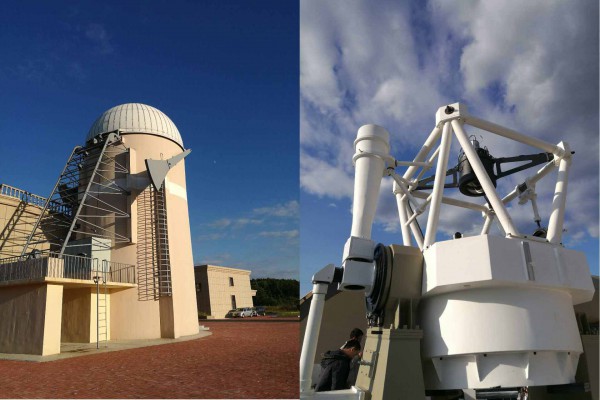
The three channels will be equipped with low read time CMOS-CCD cameras of size 2K × 2K, corresponding to a FoV of 21 × 21 arcmin2, operating in the 0.4 to 0.95 ?m band. The sensitivity of C-GFT will reach mag (r) = 19 (at 5?, AB mag) for 100 s of exposure time during the nights of the new moon.
In addition to Jiling’s dedicated C-GFT observatory, another 1 m telescope will be installed by the NAOC (National Astronomical Observatory of China) at Ali Observatory, Tibet, in western China. The NAOC will have access to approximately 2,500 observation hours per year, which could be dedicated to SVOM gamma-ray burst monitoring via alerts with a typical response time of approximately 15 min.
